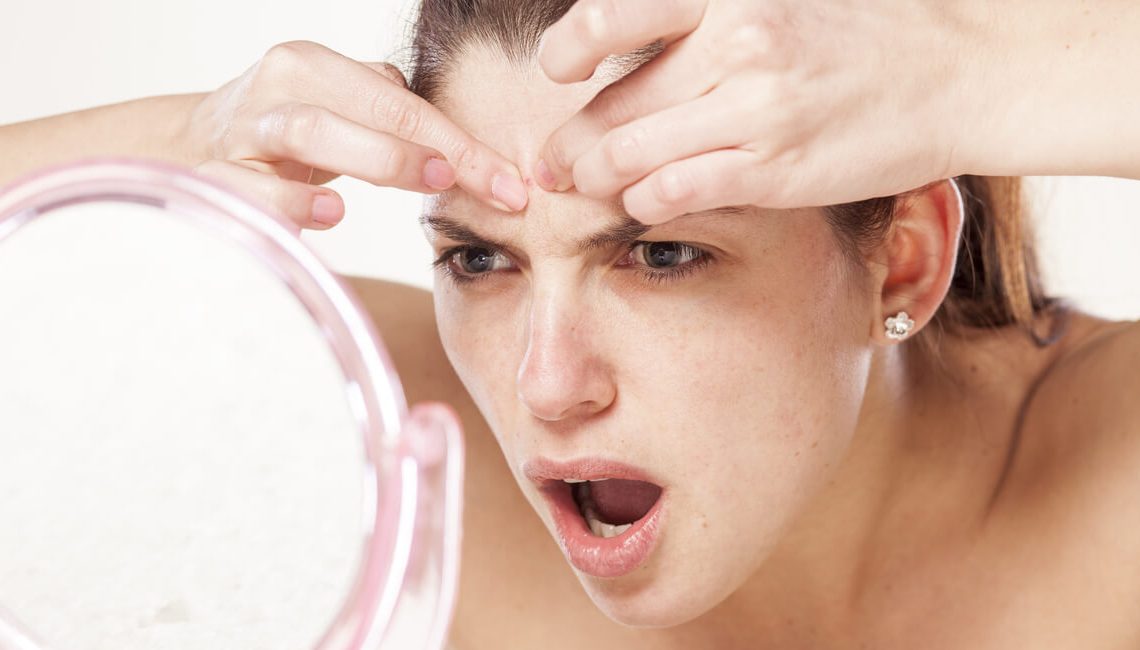
Acne doesn’t only hit during puberty, but also affects many adults. Luckily with the wisdom of age come the scientific and emotional tools to deal with it. Or not?
Acne is a frequent condition characterized by the presence of comedones (black- and whiteheads), redness, papules and pustules (so-called “spots”) and in some cases even deeper nodules and cysts. It originates in the sebaceous glands, i.e. the ones which produce sebum, especially on the face, back, chest and shoulders.
Normally, sebus will spread to the skin surface through the pores of sebaceous glands. These orifices are surrounded by a collarette of epidermal corneous cells which are being shed by the skin. Often the increase in sebum production is followed by an increase in the thickness of this collarette, whose cells contribute to forming a “plug” that impedes correct sebum expulsion. Thus the blackhead is born, a.k.a the initial, triggering lesion of the acneic process.
Acne is incredibly reliable in appearing in the least opportune moments. Even mild forms of acne, especially in frequently looked-at areas such as the face, can lead to psychological distress, often exaggerated compared to the real extent of the problem. If we consider acne usually hits during adolescence, things get complicated. In this delicate phase of life, in fact, boys and girls are already engaged in facing the psychological distress that physical changes and the inevitable detachment from childhood entail: in these conditions, acne can represent a further and significant disturbing element.
But for adults, too, acne is a problem, as it is often considered an obstacle to one’s social life, both from a personal and working point of view. The causes of acne are multiple: usually hormones, family and behavioral factors come into play. It is known that acne generally appears at puberty, precisely because of the increase in the production of hormones typical of this phase of the individual’s sexual maturation.
Also the use of inadequate cosmetic product (excessively greasy or occlusive products, or some of the dyes contained in makeup) can cause or worsen the acne process. In this regard, it must be emphasized that excessively meticulous cleansing, in the mistaken belief that acne is caused by dirt, is counterproductive. Being too aggressive can in fact cause, or at least worsen, the signs of acne.
Currently, much attention is being paid to the development of a dietary regimen for acne patients: in particular, foods with a high glycemic indexes and milk (especially when skimmed) tend to worsen or even support the acne process. Smoking, stress and physical tiredness also negatively affect this condition.
Contrary to popular belief, acne isn’t “a normal thing” or “a trivial disorder that’ll just pass by itself “. Acne must be treated adequately and as early as possible, if one doesn’t want to resign oneself to living with it for years, waiting for a spontaneous recovery. Furthermore, untreated acne can lead to the formation of scars, which also remain after healing. These are fundamentally due to the presence of nodular-cystic lesions caused by long-lasting but also badly abused acne (squeezing, excoriation and all kinds of torture, the patient inflicts on his/her skin in the useless attempt to quicker healing).
The role of the dermatologist is fundamental to start a treatment based on the type of acne and the local and general response to therapies. But patients, too, must do their part, following the prescribed therapies with patience and compliance, and not straying from the nutritional and cosmetic advice which accompanies the therapy. One of the most frequent problems is dehydration: usually anti-acne therapies are aggressive on the skin both for the need to remove excess sebum and to induce a more or less intense exfoliation. Cutaneous hydration must therefore be restored, also through the restructuring of the epidermal barrier with specific products. Last but not least, the list of unsuitable cosmetic products is long, and the same goes for make-up, which is why it is advisable to ask one’s dermatologist for advice before using them.
Article of Dr Adele Sparavigna for https://4me.styl


